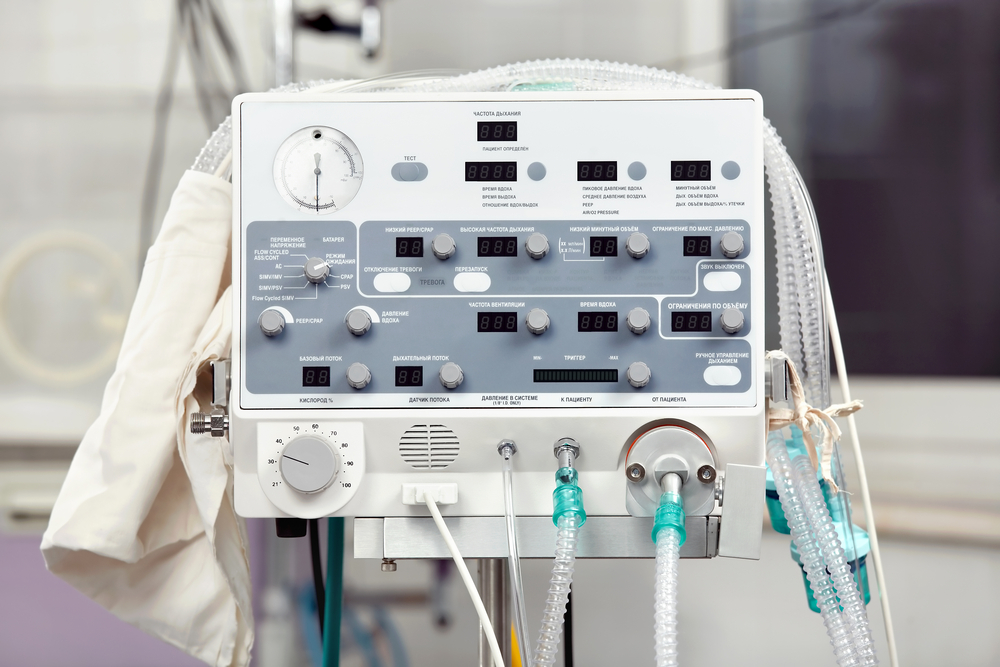Last Friday, President Trump invoked the Defense Production Act (DPA) to order General Motors to produce ventilators for the coming demand shock from COVID 19, the illness caused by the coronavirus. The move follows calls by several politicians and talking heads for the president to use the DPA to increase supplies of ventilators, protective masks, test swabs, and other medical supplies.
Peter Navarro, who helps run the Trump administration’s protectionist trade policies, is now also overseeing “its wartime powers forcing private businesses into the fight against the coronavirus pandemic,” according to the Wall Street Journal. Reports the WSJ:
But it’s unclear why government officials believe the action will yield any more ventilators (or masks, swabs, etc.) any faster than would have been produced otherwise.
The DPA was enacted in September 1950 after the United States was caught ill-equipped by the start of the Korean War. The post-war U.S. economy was humming along and government officials likely didn’t want to bid against American consumers for output.
In essence, the law grants the federal government three powers: (1) it can order producers to prioritize the federal government’s orders ahead of others (for both finished goods and in the supply chain), (2) it can provide producers with federal money to initiate and expand production, and (3) it can take action against price gouging and hording.
A flood of federal dollars under the second power might prove helpful in expanding ventilator manufacture, but it is the first power that the Trump administration specified in its DPA order. According to the White House memorandum on the order, “The Secretary [of Health and Human Services] shall use any and all authority available under the Act to require General Motors Company to accept, perform, and prioritize contracts or orders for the number of ventilators that the Secretary determines to be appropriate.”
But General Motors already appeared to be prioritizing ventilator production. Indeed, with much of the American economy now frozen by stay-at-home orders, the automaker would be eager for the work and revenue.
Remember, until now GM has not been a ventilator manufacturer. In the current emergency, the automaker has become a subcontractor for the Seattle-area ventilator-maker Ventec. (This Seattle Times article on the partnership is a very good read.) Ventec makes around 250 ventilators a month, while the expectation is that the nation will need to add tens of thousands of the machines in the coming weeks. (According to the New York Times, the nation’s hospitals have a total of roughly 160,000 ventilators, with an additional 12,700 in the National Strategic Stockpile.) Ventec hopes to scale up its own plant’s output to 2,000 a month, but that will take time and be far too few for the approaching emergency. So the firm approached GM about creating a second production line at a GM electronics plant in Kokomo, Indiana. Similar partnerships have been forged between Medtronic and Tesla at Tesla’s “gigafactory 2” in Buffalo, and between GE Healthcare and Ford at Ford’s Rawsonville plant in Ypsilanti, MI. In all three cases the manufacturers were motivated by market forces, though government entities are among the buyers.
The Kokomo Operations GM facility specifically builds auto electronics as well as contracted electronics, so it has clean rooms and other facilities needed for ventilator manufacture. Still, it will take time to secure inputs, create production lines and train workers, get them up to speed, and quality-test the output. The expectation is that the plant will produce 10,000 units a month—with some surge capacity—by summer. That is not much different than what is projected for the GE Healthcare–Ford partnership; however, the Trump administration apparently became frustrated with Ventec–GM and issued the DPA order. As the New York Times notes, the Trump administration has used the the DPA hundreds of thousands of times since taking office, but this is the first use in relation to COVID-19.
Though it’s unclear whether the order will yield more ventilators faster, it does have one clear economic effect: the federal government is now a de facto monopsony over Kokomo’s output. That raises the prospect that public choice could play a role in distributing that output. It also calls to mind the thousands of “FEMA trailers” deployed in the wake of Hurricane Katrina.
A similar version of this post appeared at Cato at Liberty.
Thomas A. Firey is a Cato Institute senior fellow and managing editor of Cato’s policy journal Regulation


READER COMMENTS
Thomas Knapp
Apr 8 2020 at 2:59pm
There are a couple of possibilities.
One is that invoking the DPA will yield fewer quality ventilators, more slowly, than an un-forced market would have.
The other is that invoking the DPA will yield an insanely large surplus of low-quality ventilators that nobody wants and that end up rusting in salvage yards, in lieu of quality products of OTHER sorts that an un-forced market would have delivered to customers who wanted those products.
If nationalizing production delivers (1) the needed amount of (2) a quality product, (3) faster than the market would have, it will be the first time in observed history that has ever happened and will be worthy of the same kind of fascinated study as Jesus’ Virgin Birth would have received had that actually happened.
Pierre Lemieux
Apr 9 2020 at 10:09am
Thomas Knapp: When the state (politicians and bureaucrats) is the Holy Ghost, new possibilities open.
Comments are closed.